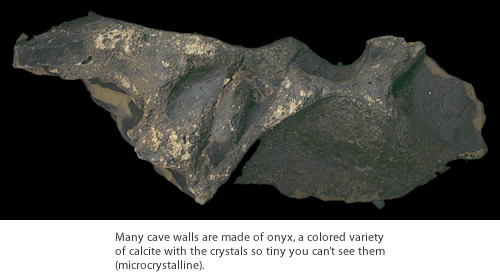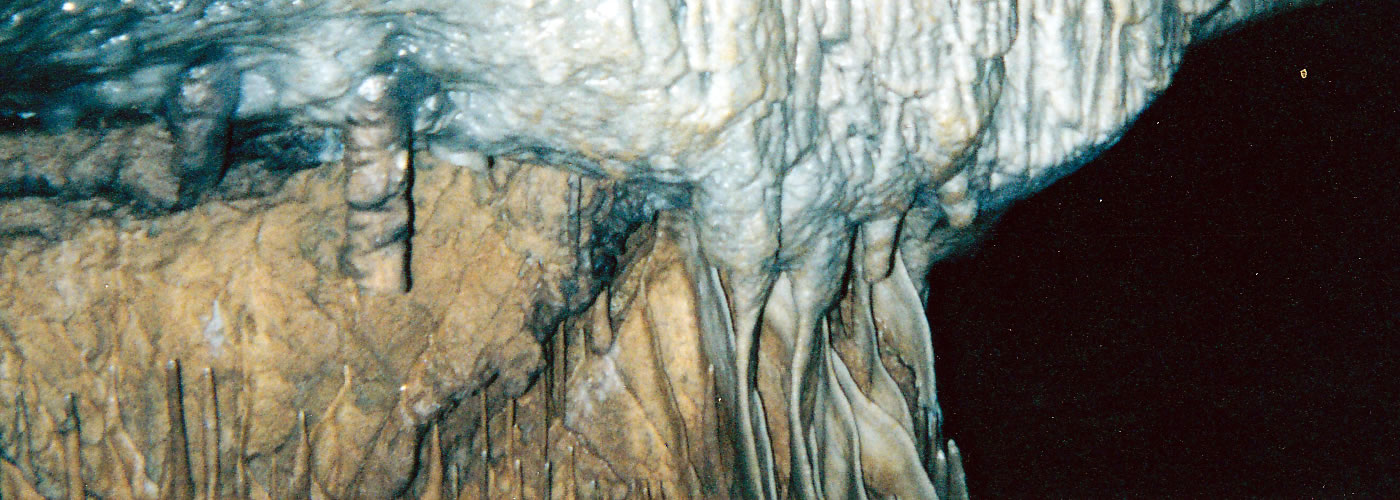Cave formations are called speleothem, from the Greek word "spelaion", cave and "thema" meaning deposit. Almost all of them are made of calcite, the crystal of calcium carbonate. Different minerals and different movements in the water account for an incredible variety of cave formations.
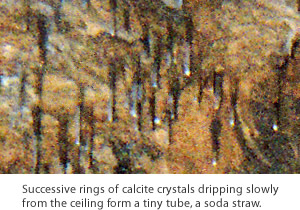
As water saturated with calcium carbonate drips through the ceiling of a cave, successive rings of calcite crystals form a tiny tube, a soda straw.
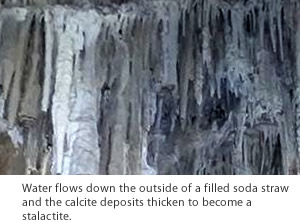
If the tube fills, water flows down the outside and the calcite deposits thicken to become a stalactite.
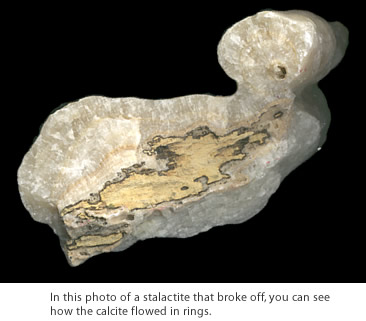
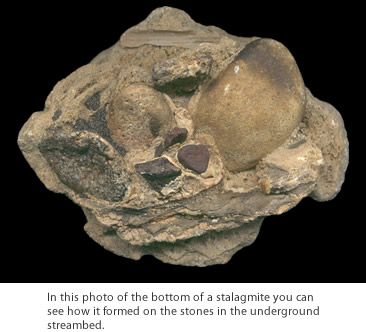
Water dripping onto the floor builds stalagmites, which in time may join stalactites to form a column.

Water drizzling along a slanted ceiling builds delicate sheets of rock, called cave draperies or curtains.
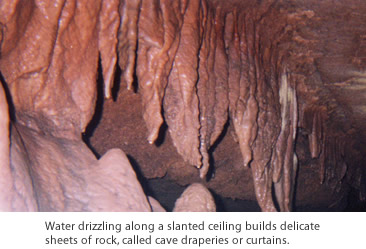
The deposits begin as winding trails of calcite, which later extend downward and thicken.
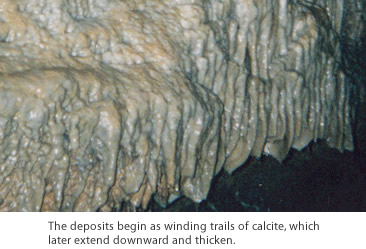
The white portions are almost pure calcite, while other minerals, mostly iron, make the orange and red stains.

When water seeps through tiny fissures in the bedrock, it can build incredible unlikely formations called helictites. Water is forced up its tiny central tub, forming a crystal at the tip.
Other speleothem grow on cave pools. Thin layers of calcite forms on the surface of pools as they evaporate. As they float, more and more calcite attaches to it in circular patterns.
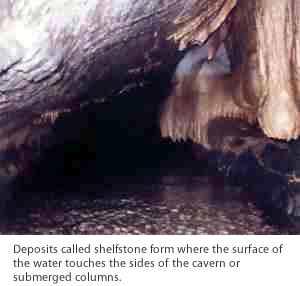
These "cave rafts" continue to float on the surface of the water as long as it is undisturbed until they reach a weight that pulls them under.
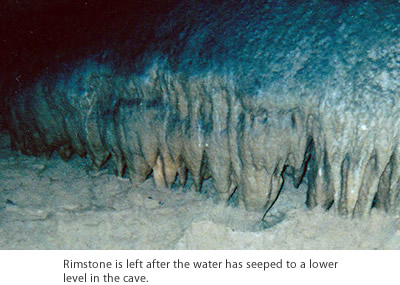
Thicker deposits, called shelfstone form where the surface of the water touches the sides of the cavern or submerged columns.
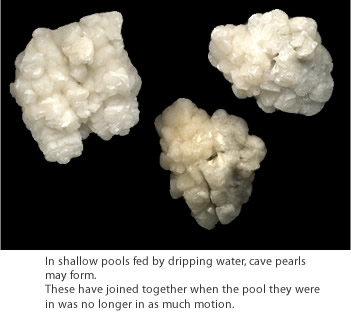
In shallow pools fed by dripping water, cave pearls may form. These small spheres are produced by layers of calcite forming around a grain of sand, much like oysters make the pearls they are named after. The agitation of the dripping water makes the pearls almost round and keeps them from sticking to one another or to the bottom of the pool.
Flowerlike structures can grow. Crystals of calcium sulfate percolate through porous rock. As new crystals are formed from behind, the flower may grow in a variety of shapes.

Large crystals may form in underwater chambers.
